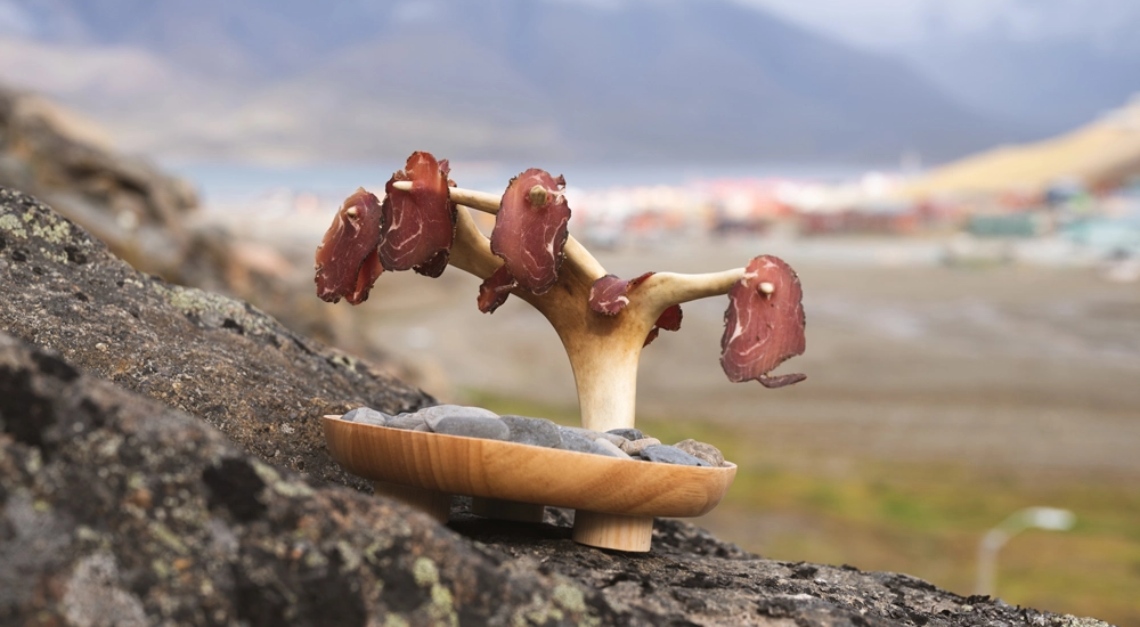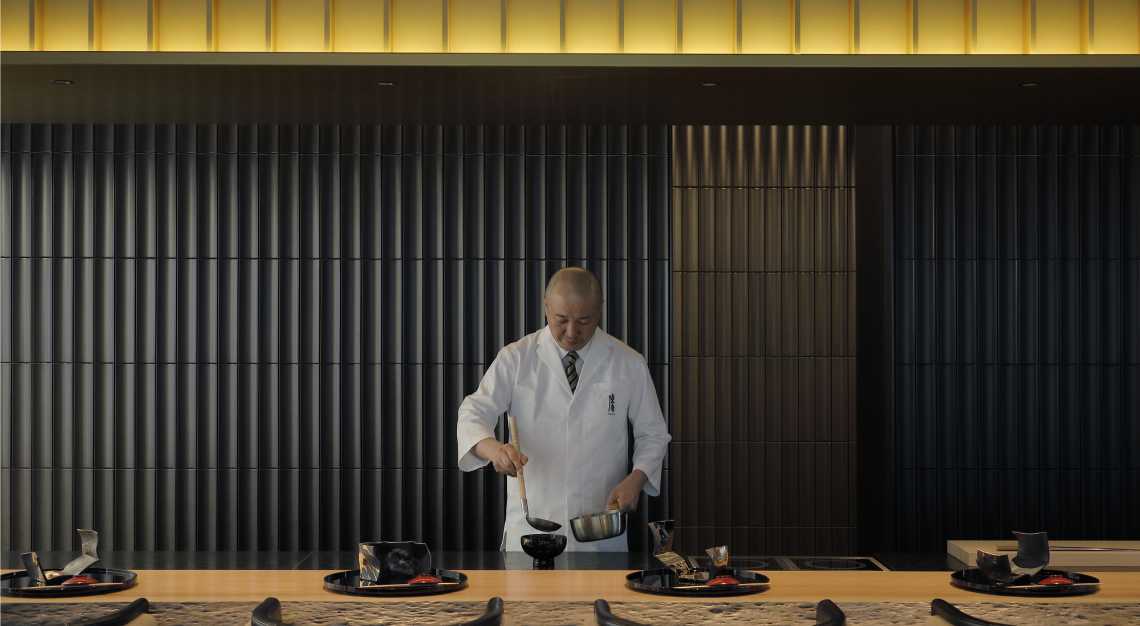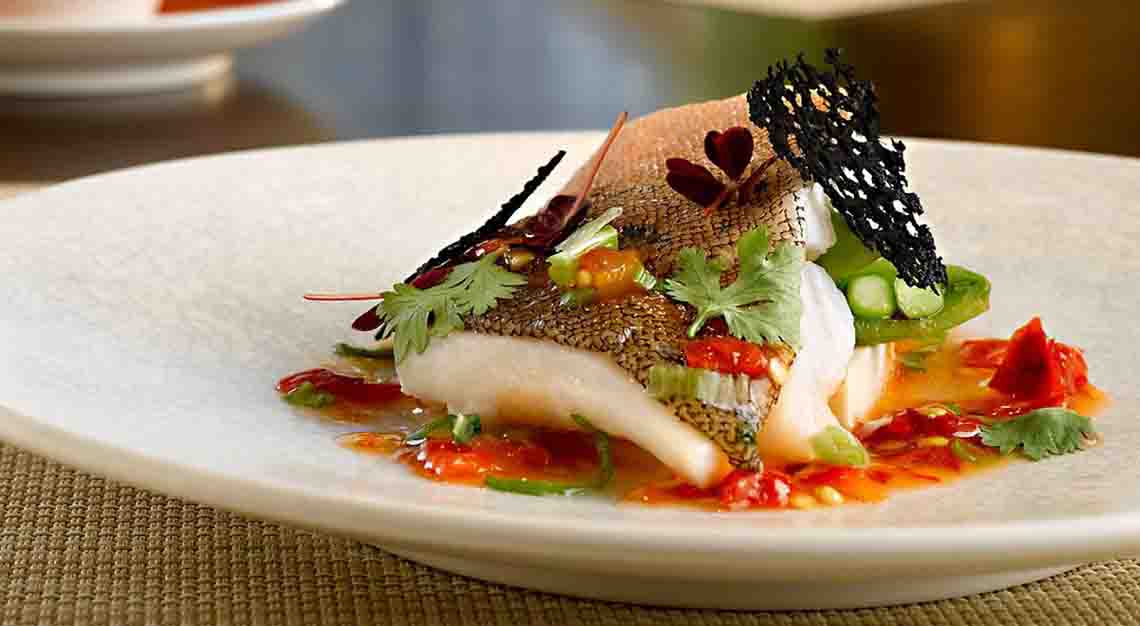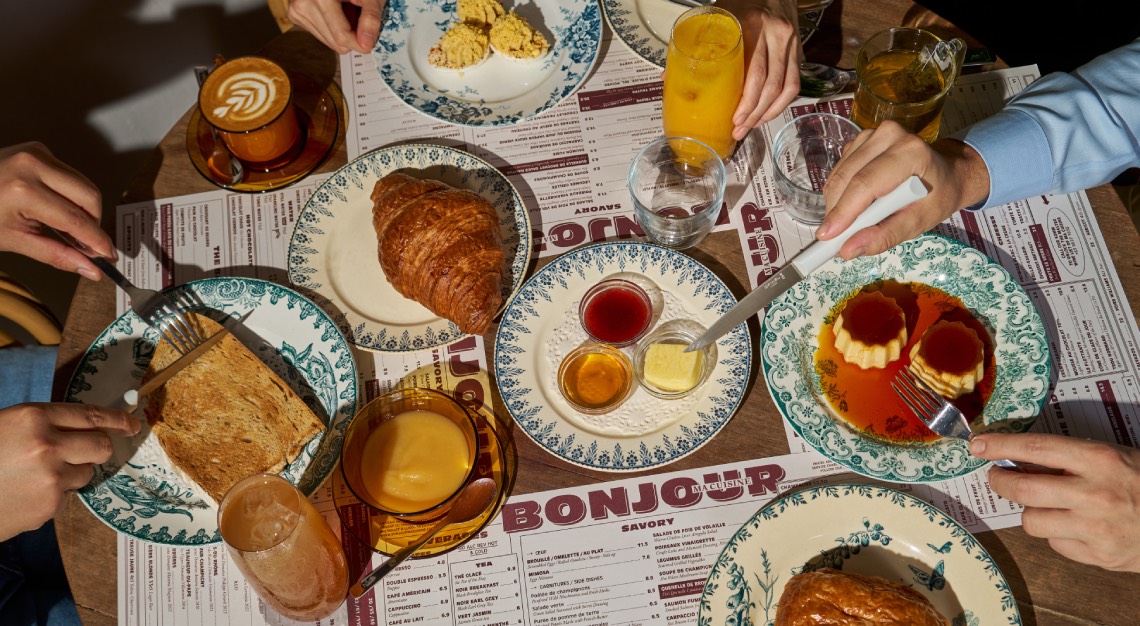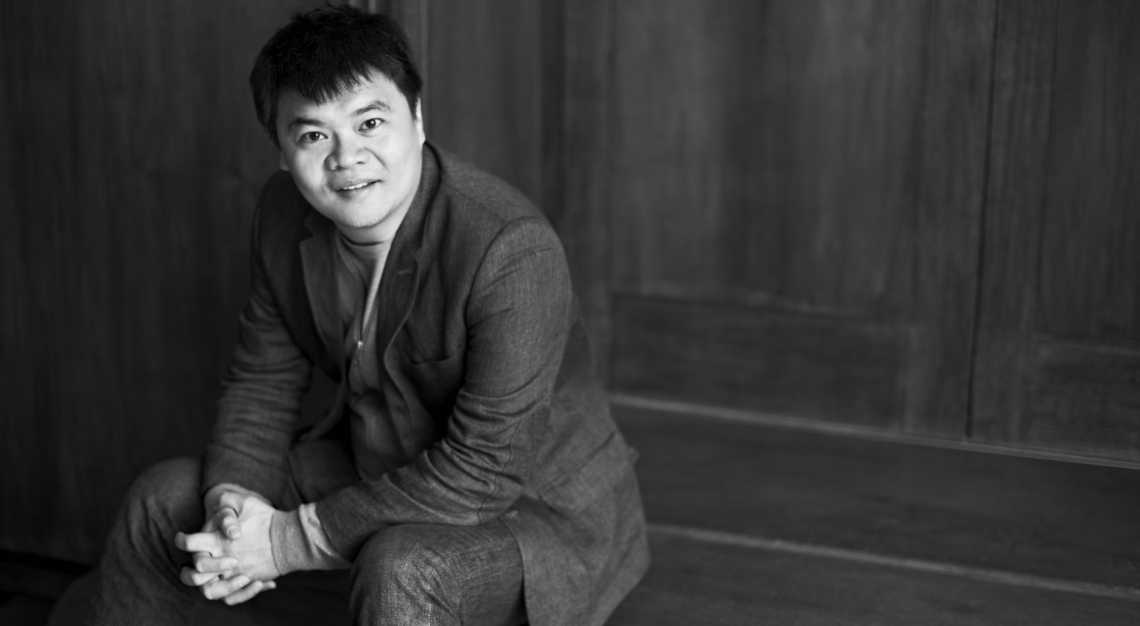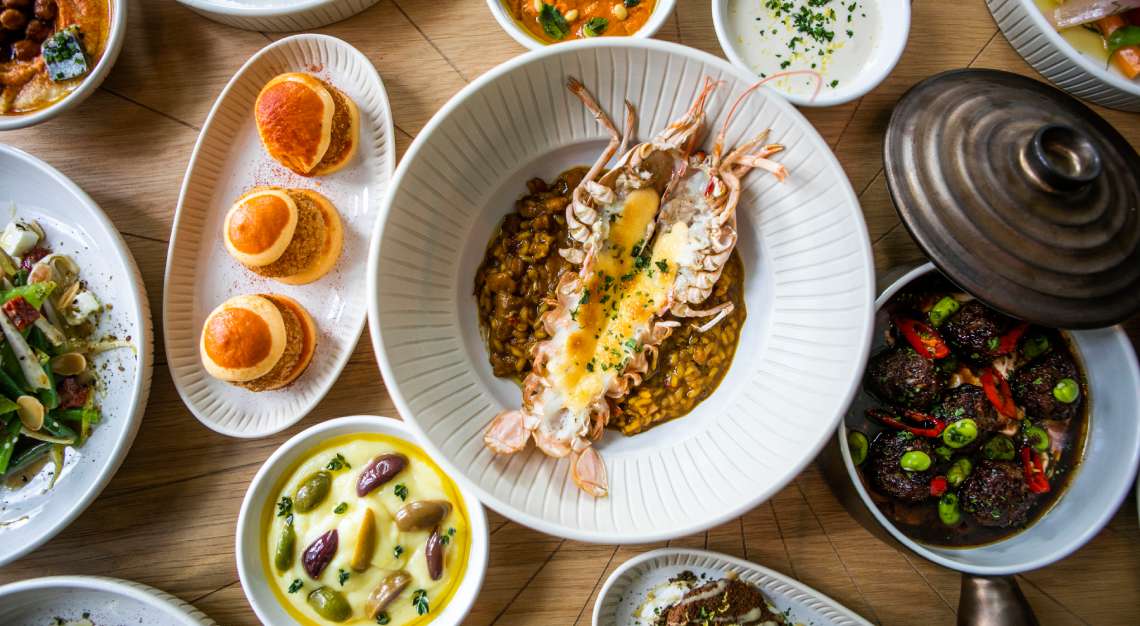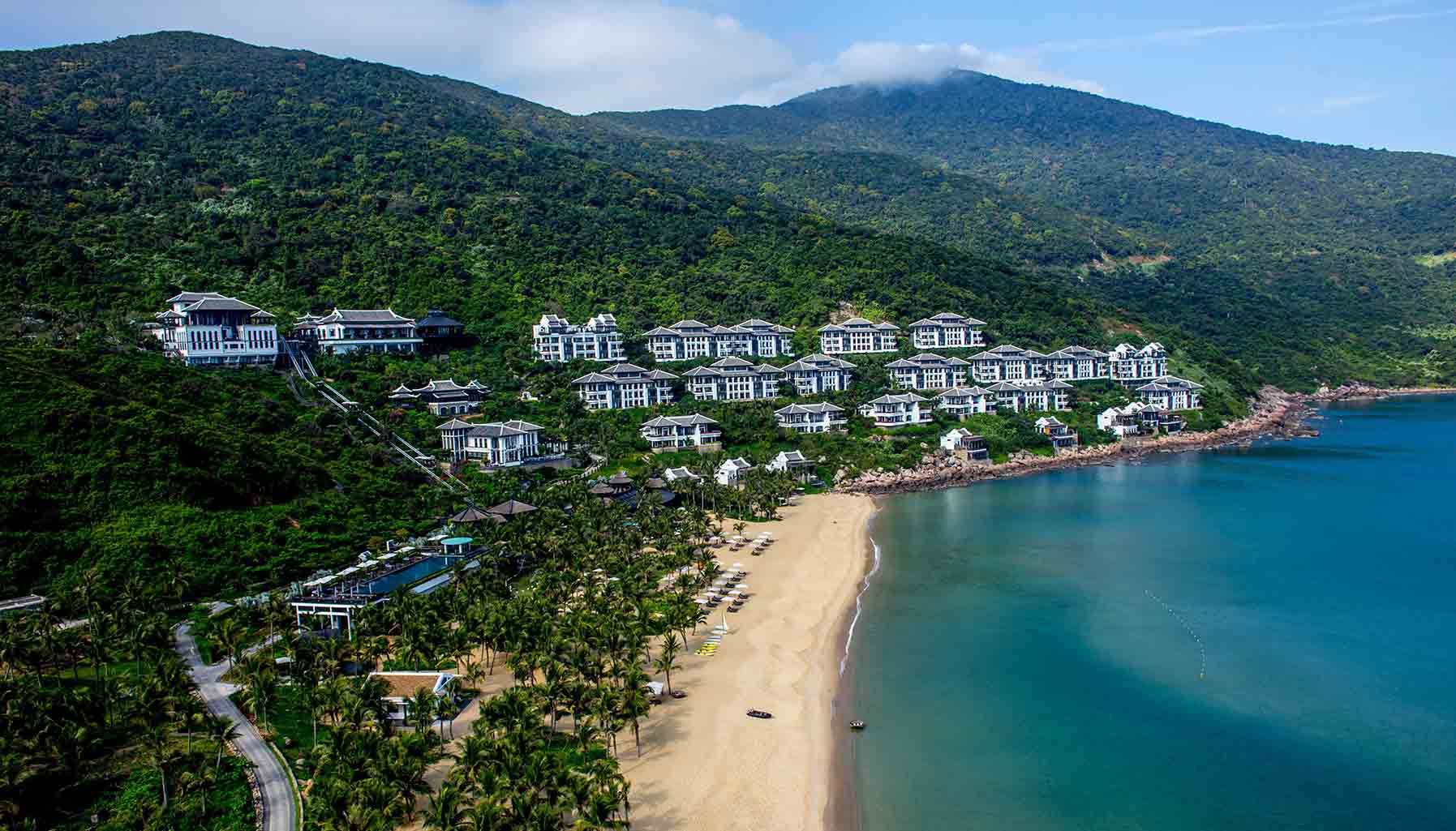Huset shows the bounty of the high Arctic
The sun had already set behind the mountains when my dining companions and I began walking to dinner at Huset. But in the flat light of dusk, I could just make out a bit of movement on the rocky, mostly snow-covered hillside. When I looked closer, I spotted three nearly invisible rock ptarmigans pecking at the ground, camouflaged by their patchy white and brown feathers.
Minutes later after arriving at the restaurant, I was savouring rock ptarmigan with kohlrabi, velouté and lovage, as well as housemade sourdough topped with crunchy seeds found in the birds’ crop. The symbolism of the experience—of seeing, then eating, local wildlife—was not lost on me. This was a true “only-in-the-Arctic” moment—and one that perfectly captured Huset’s approach to fine dining.
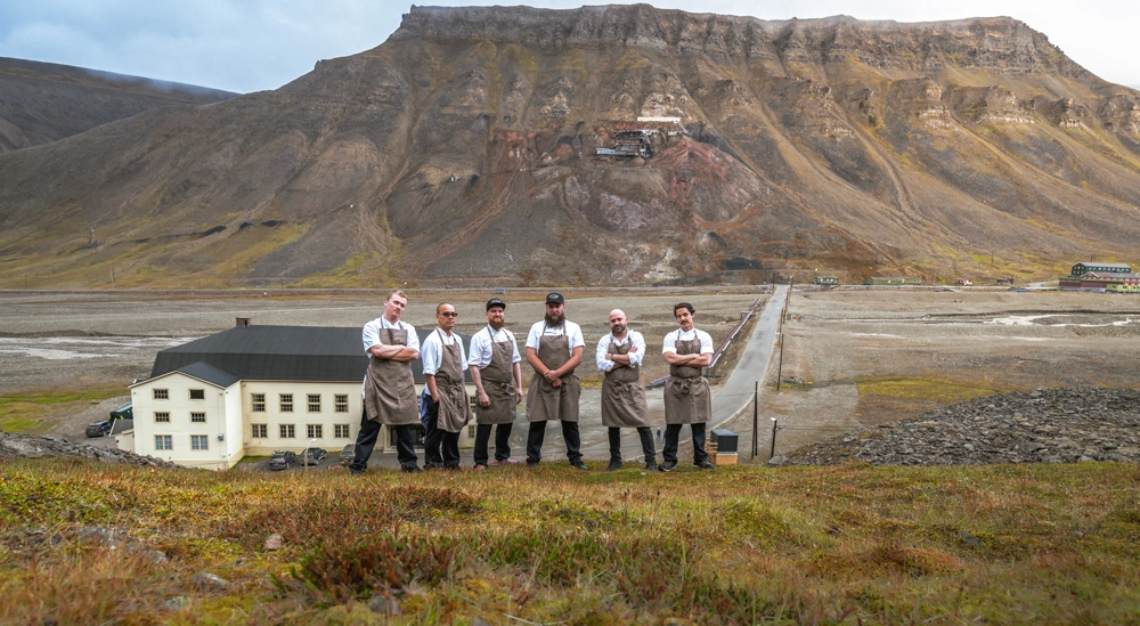
The upscale restaurant sits in the shadow of a glacier on the outskirts of Longyearbyen, the northernmost town in the world. Home to some 2,500 residents, Longyearbyen is one of the few populated areas of Svalbard, a Norwegian-governed archipelago not far from the North Pole at 78 degrees north latitude.
Here, where hungry polar bears roam the treeless tundra, all supplies must be shipped or flown in. That practical, resource-intensive hurdle is one reason why Huset chefs prepare hyper-local High Arctic ingredients like seal, reindeer, ptarmigan, mountain sorrel, kelp and a variety of seafood.
But there’s more to the restaurant’s philosophy than logistics and sustainability. It’s also a nod to the many intrepid Arctic explorers throughout history who ate what they could hunt, find or catch (though today’s preparations are, of course, more sophisticated). For adventurous travellers who venture above the Arctic Circle, Huset helps tell the story of this remote, otherworldly place.
“You can not only see Svalbard, but you can also taste it,” says Veronique Bertani, Huset’s manager.
Svalbard’s evolution from rugged outpost to refined destination
Historians credit Dutch navigator Willem Barentsz with discovering Svalbard—though he didn’t intend to. In the late 16th century, Barentsz became convinced he could chart a northwest passage from Europe to Asia. Despite several valiant attempts to plow his ships through sea ice, he never found that Arctic shortcut. But, on his third voyage in 1596, Barentsz and his crew stumbled upon the then-unknown archipelago.
Other vessels journeyed north to see for themselves and realised the region was brimming with whales, seals and walruses, whose vast stores of blubber they could melt into valuable oil. Whaling became the archipelago’s main industry through the end of the 18th century, when the massive marine mammals nearly went extinct. Hunters and trappers picked up where the whalers left off, harvesting fur-bearing animals like polar bears and Arctic foxes for their lucrative pelts.
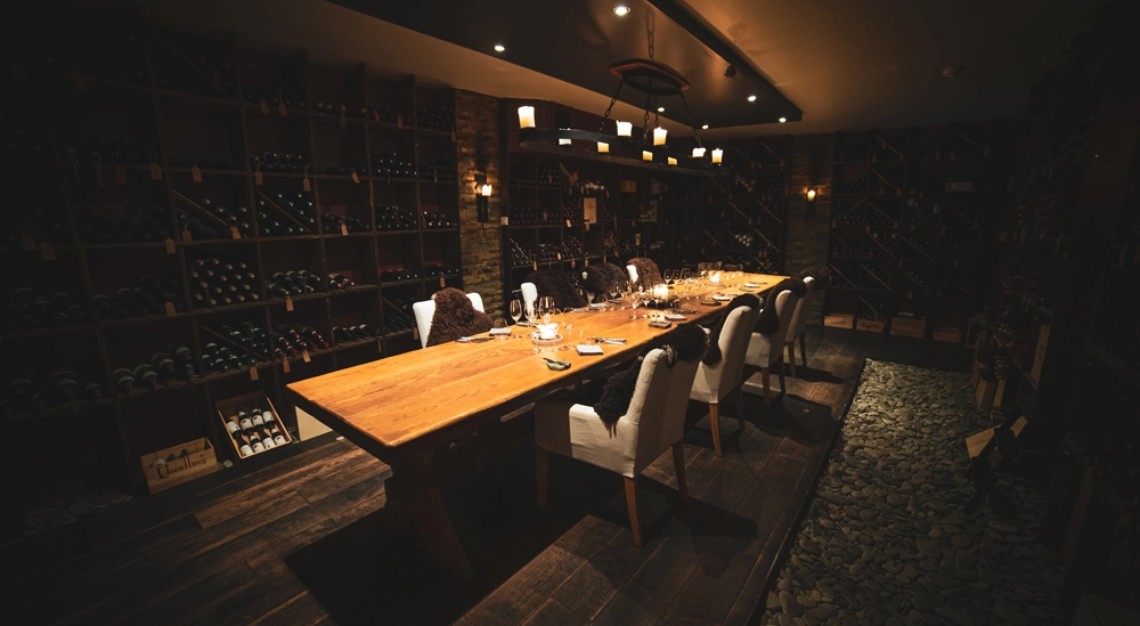
Later, in the early 20th century, coal drew eager entrepreneurs to the archipelago. And that’s when Huset’s life began: While rebuilding Longyearbyen after World War II, the Norwegian mining company Store Norske constructed a large brick building and called it “Huset,” which means “the house” in Norwegian. True to its name, Huset became a community hub, serving as the tiny town’s post office, church, library, school, bistro, gymnasium and hunting supply shop. After an avalanche, it also briefly served as Longyearbyen’s hospital.
“They wanted Huset to be a place for everybody,” Bertani says. “It was so important—it was the heart of the city.”
The first iteration of the restaurant opened inside the building in the late 1970s. Over the decades, it has changed hands—and concepts—several times, but has remained a fine dining fixture since the late 1990s. Huset’s impressive wine cellar—which now totals more than 15,000 bottles and is one of the largest in Scandinavia—has also stayed with the restaurant through the years.
Today, Hurtigruten—the longstanding Norwegian travel and transportation company—owns and runs the restaurant, which offers a six-course seasonal Nordic tasting menu with wine, beer or juice pairings. Since taking over last year, Hurtigruten staffers have spent hours researching the building’s past and tracking down historic photos to hang on its walls—all in an effort to highlight and preserve Huset’s significance to Longyearbyen.
The modern Huset
Huset’s current menu, developed by sous chef Frederik Ojaste, makes the most of the High Arctic’s finite bounty. Hunters supply meats like seal, reindeer and ptarmigan, while Huset’s chefs harvest native plants, forage for mushrooms and fish for seafood. Ojaste even hiked up into the mountains to find Huset’s delicate butter and charcuterie plates, which are actually slabs of rock that contain ancient fossils.
“It’s a bit limiting in what you can do, but it’s also freeing because it opens up your mind to new things you can do with what you have,” he says. “You get just a small amount of everything so you try to come up with new ways to use everything.”
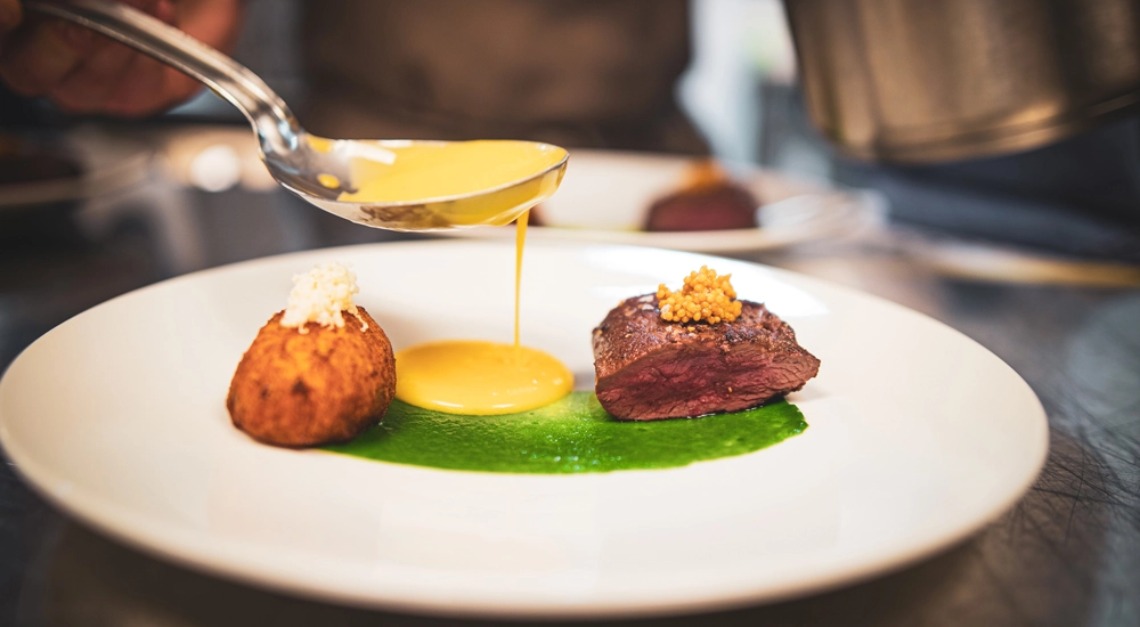
Case in point: The reindeer on Svalbard—which travellers can regularly spot wandering through town—are a unique indigenous subspecies with short stocky legs, small heads and plump bodies that make them well-adapted to the harsh Arctic winters. Ojaste trims the back meat into steaks, roasts the marrow and whisks it into butter and cooks the bones into stock, which he then transforms into a rich reindeer demiglaze. He uses the other bits of meat for stew pieces or mince, or turns them into sausage. The animals’ large necks, which are full of sinew and cartilage, make succulent reindeer coppa for serving as charcuterie.
The whole-animal philosophy also applies to fish. Ojaste serves a tender fillet of turbot topped with the fish’s crispy skin that’s reminiscent of pork cracklings. From the turbot’s bones, he makes stock, which he turns into a rich sauce for plating the dish.
Nothing is wasted—and everything authentically reflects the unparalleled flavours of the surrounding land and sea.
“I want everyone to enjoy the reindeer, the ptarmigan, the fish as much as they can,” he says. “You can’t get it anywhere else.”
This article was first published on Robb Report USA
